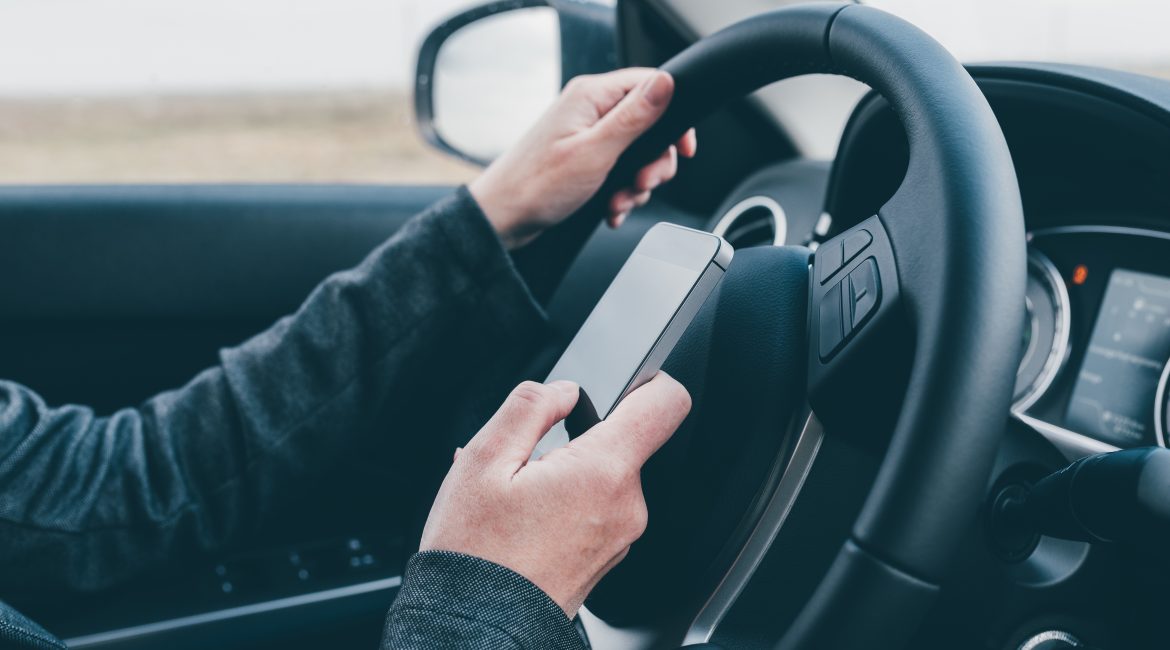Keep your eyes off your phone and on the road. Let’s bust these 5 texting and driving myths!
There aren’t many statistics for texting and driving in South Africa, but given our death toll on the roads is being coined a “national crisis,” we can guarantee that the numbers in this blog apply to you, too.
Getting behind the wheel is a massive responsibility, and it’s important you take pride in keeping yourself and others safe on the road. Here are 5 myths about texting and driving that will make you second guess responding to that “ping” the next time you’re driving.
Myth 1: A few seconds won’t count
Safe driving is made up of being safe each and every second you’re on the road. We often forget how fast cars are, and how strong the impact of a crash can be in a matter of seconds.
Even if you’re the savviest texter in the world or a premium car DJ, just the five seconds it takes to swipe to the next song or reply to a DM can be deadly. For example, if you’re driving at 88.51 kph, it will only take five seconds for you to travel a distance of nearly 10 meters – that’s a considerable amount of distance to be freewheeling it with your eyes off the road.
The same goes for if you’re reaching for your bag in the backseat, taking a bite of your garage pie, or changing the song on the radio. You can’t afford even a second of distraction.
Myth 2: Texting won’t cause a big accident
We’re not sure why this is a myth that even matters, because why would you risk even having a small accident? It’s a huge inconvenience for everybody involved.
Don’t believe that texting and driving only puts you at risk of rear-ending the person in front of you? A study in the US showed that “750,000 vehicles were driven by someone using a hand-held cell phone” and in 2020, 6000 texting-related crashes resulted in a fatality.
It’s impossible for you to predict what can happen one minute from the next. One second you could be looking at your phone and the next, you could be having a head-on collision with another car.
Myth 3: It’s fine if I use my phone at a stoplight
Firstly, you’ve heard of smash and grabs, right? Using your phone at a stoplight keeps you distracted from what’s going on around you – and makes you an easy target for a robbery or hijacking.
A stoplight is not a place to chill out – it’s actually where you need to be the most aware. You can’t just trust that when the light turns green, you’re safe to go. People skip through red lights all the time and you need to have your eyes on the road.
Related: Here’s What You Need To Know About Car Hijacking In SA
Myth 4: You can do two things at once
Talking to your mom on the phone and cooking dinner? Sure. Painting your nails on a Zoom meeting with the camera off? Absolutely. Texting and driving? No.
Take this into account: A study showed that those who drove under the influence of alcohol (at the legal limit) had a reaction time 12% slower than usual. Those who had smoked marijuana had a 2% slower reaction time.
People who were texting and driving had a deteriorated reaction time of 35%.
Myth 5: Texting is the only distraction I need to monitor
If anything, texting has just become a more obvious and heightened form of distracted driving. But distracted driving has been around as long as driving itself, so there are clearly other ways to lose focus.
Other forms of distracted driving include: eating, smoking, listening to loud music, chaotic passengers, and reaching for objects around the car.
It’s important to note that it isn’t just texting that distracts you – even talking through your Bluetooth or in-ear device can take your mind off the road.
Some people may even think that using voice-activated texting is a safer alternative. An initial study showed that there was a 2x slower response time for phone users, regardless of whether they were manually texting or using voice texting technology.
Learn more: 6 Safe driving practices that just might save your life
How to combat texting and driving
- Let friends and family know you will not answer your phone when you’re driving, and if they know you’re driving, they must refrain from messaging or calling.
- Keep your phone out of reach, but close enough in case of emergency. You don’t need to see your phone, so you can keep it in the glove compartment or in your side panel.
- Turn your phone on silent. We forget how habitual it is to reach for our phone when we hear a notification, even when we’re doing something else.
- Make a point of pulling over if you desperately need to send a message or make a call.
Think about your insurance
If you get into an accident and it can be proven you were texting and driving, your insurance will most likely reject your claim. This incident will stay on your insurance history, even if you move to a new insurer.
All the best and keep your eyes on the road!
Your Insurance Family,
Oneplan




